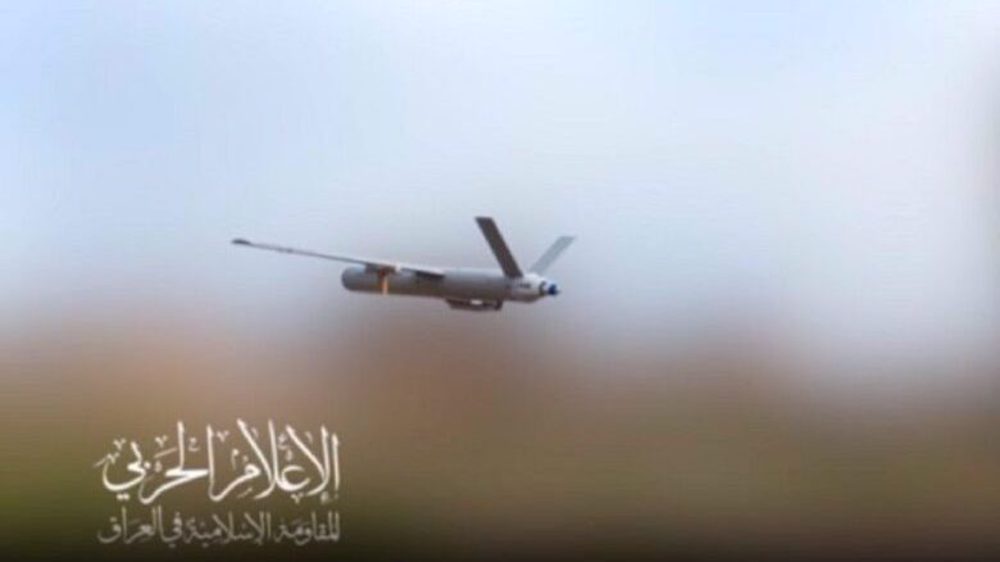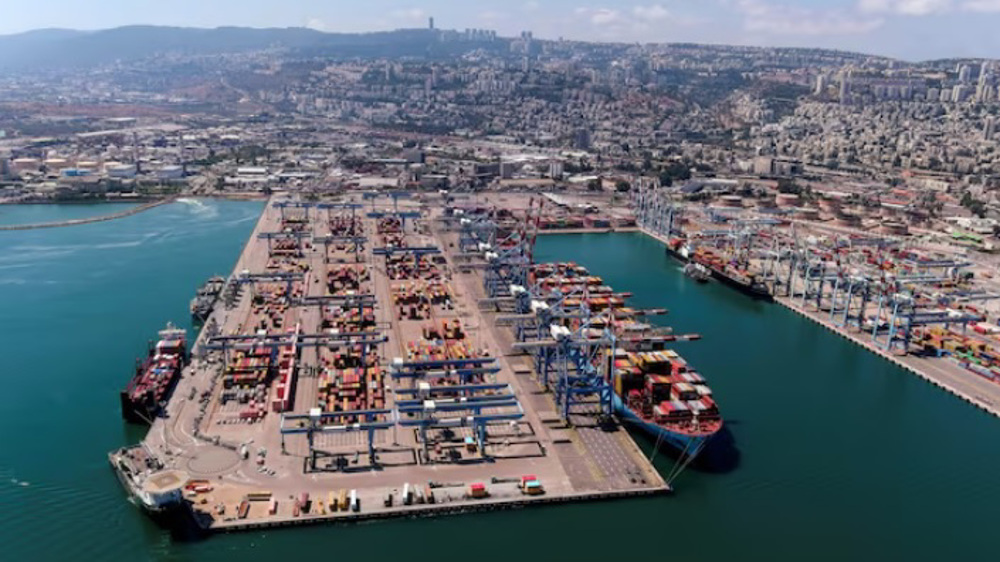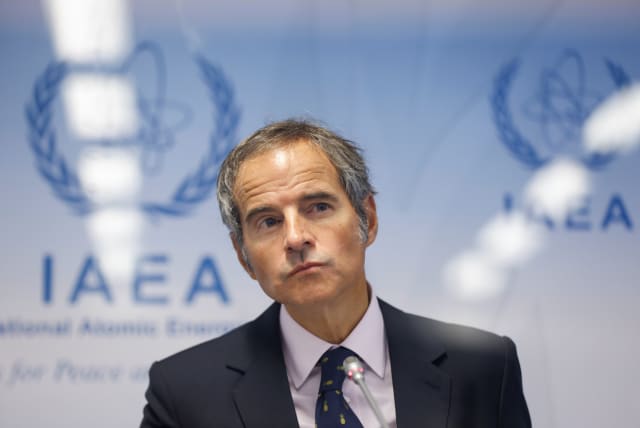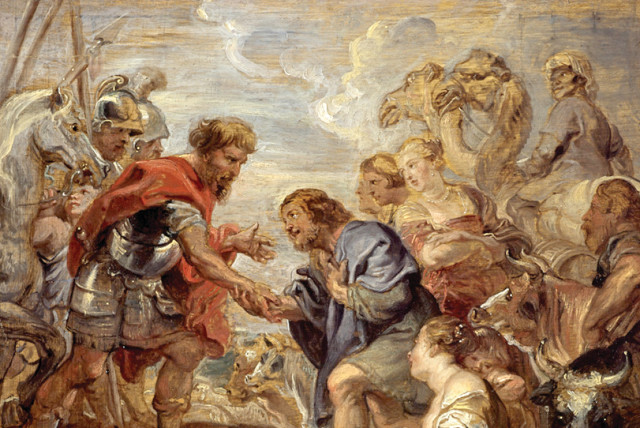 Head of the Atomic Energy Organization of Iran Mohammad Eslami and Director-General of the International Atomic Energy Agency Rafael Grossi attend a joint press conference in Isfahan, Iran on May 7, 2024. (Photo via AEOI)
Head of the Atomic Energy Organization of Iran Mohammad Eslami and Director-General of the International Atomic Energy Agency Rafael Grossi attend a joint press conference in Isfahan, Iran on May 7, 2024. (Photo via AEOI)
IAEA chief visits Iran amid rhetorical shift in favor of atomic arms
The story: After repeated delays, the head of the UN nuclear watchdog has visited Iran in a push for stronger oversight. Tehran, however, is reluctant to grant more transparency without any concessions. The trip comes amid a noticeable shift in public discourse in Iran about the potential for building nuclear weapons.
The coverage: Director General of the International Atomic Energy Agency (IAEA) Rafael Grossi visited Iran on May 6 to attend a nuclear technology conference and meet senior officials.
- At a joint press conference, Mohammad Eslami—head of the Atomic Energy Organization of Iran (AEOI)—said he had held “positive” talks with Grossi.
- The Iranian atomic energy chief insisted that Tehran would continue its cooperation with the Agency to resolve differences over outstanding safeguards probes.
- Eslami added that a Mar. 2023 agreement between Iran and the IAEA was a “good basis for interaction” and a “baseline for a roadmap.” He also warned that “hostile measures against Iran” by Israel should not impact the IAEA’s interaction with Iran.
Grossi confirmed during the news conference that he and Eslami had agreed to continue their engagement.
- The IAEA director dismissed worries about potential Israeli and US influence on the Agency, stating, “We do not pay attention to foreign actors and only focus on our dealings with Iran.”
- In comments to reporters upon his return to Vienna, the IAEA chief complained of “completely unsatisfactory” cooperation, urging Iran to adopt “concrete” measures to address concerns over its nuclear program.
Meanwhile, Iranian Foreign Minister Hossein Amir-Abdollahian urged the UN watchdog to adhere to “impartiality” and “professionalism” in its work.
- Amir-Abdollahian on May 6 warned Grossi against buckling under US pressure and criticized Washington over its “history of [acting in] bad faith.”
- The Iranian chief diplomat likely referred to the unilateral US withdrawal in 2018 from the 2015 Joint Comprehensive Plan of Action (JCPOA), also known as the Iran nuclear deal.
- Of note, Amir-Abdollahian told reporters on May 8 that Iran seeks to resolve issues with the UN nuclear watchdog via “technical cooperation and not political pressure.”
Grossi’s visit featured prominently on the front pages of newspapers in Iran.
- Hardline daily Javan noted warnings to the IAEA not to repeat Israeli rhetoric against Iran, while conservative Farhikhtegan newspaper criticized Grossi for perceived unfairness and contradictory behavior in his dealings with Tehran.
- On the other hand, Reformist newspaper Mardomsalari criticized hardliners for “throwing wrenches” into Iran’s cooperation with the UN nuclear watchdog.
- Iranian journalist Hadi Mohammadi challenged Grossi’s push for more oversight. Mohammadi argued that some of the steps the IAEA wants Iran to take are “in conflict” with Iranian law. Of note, the conservative-dominated parliament in Dec. 2020 voted to compel the government to expand nuclear activities unless the US returns to the JCPOA.
The context/analysis: The relationship between Iran and the IAEA has long been tense over uranium traces found at several old but undeclared sites.
- The Agency has closed some of its probes, but investigations into two sites remain open.
- Amid a continued deadlock over the revival of the JCPOA, Iran has in the past two years abandoned enrichment limits set under the accord and is now refining uranium to 60% purity—far above the 3.67% cap under the 2015 deal, but below weapons grade.
- Tehran has not ruled out the possibility of increasing the level of enrichment to 90%, the purity necessary to build atomic weapons.
While fundamentally rejecting nuclear arms, Iranian officials have previously highlighted that the main obstacle to the development of such capabilities is political and not technical.
- Chairman of the Strategic Council on Foreign Relations and former foreign minister (1997-2005) Kamal Kharrazi stated in Dec. 2022 that Iran “can make” a nuclear weapon but “does not intend to.”
- Ali Akbar Salehi, a two-time former nuclear chief (2009-10, 2013-21) and ex-chief diplomat (2011-13), said in a TV interview on Feb. 11 that Iran has “crossed all the thresholds of nuclear science and technology.”
In recent weeks, there has been further heightened rhetoric on the topic of nuclear arms. Amid escalating tensions with Israel, senior officials have suggested a possible shift.
- Ahmad Haqtalab, head of the Islamic Revolutionary Guard Corps (IRGC) unit responsible for securing Iran’s nuclear sites, indicated that Tehran might “rethink its nuclear doctrine” if Israel targets such facilities.
- Hardline MP Javad Karimi Qoddousi has claimed that Iran would only need one week to test a bomb.
- Kharrazi of the Strategic Council on Foreign Relations stated on May 8, “If the Zionist regime attacks Iran’s nuclear facilities, our level of deterrence will change; we have no decision to produce nuclear weapons, but if our existence is threatened we have no choice but to change our nuclear doctrine.”
The future: In parallel with concerns of a military conflict with Israel and possibly the United States, there has been a shift in support of developing nuclear weapons in the public debate in Iran. The idea of Iran becoming an atomic power has entered the mainstream, with few indications that such rhetoric will dissipate.
- While it is too soon to tell, Grossi’s visit is not likely to yield tangible results without concessions from the IAEA—including on outstanding probes.
- Iran avoided a censure resolution at the IAEA Board of Governors’ quarterly meeting in March this year. However, if Grossi assesses that Tehran has not been more cooperative, Iran could face action by the Board at its next meeting in June.











